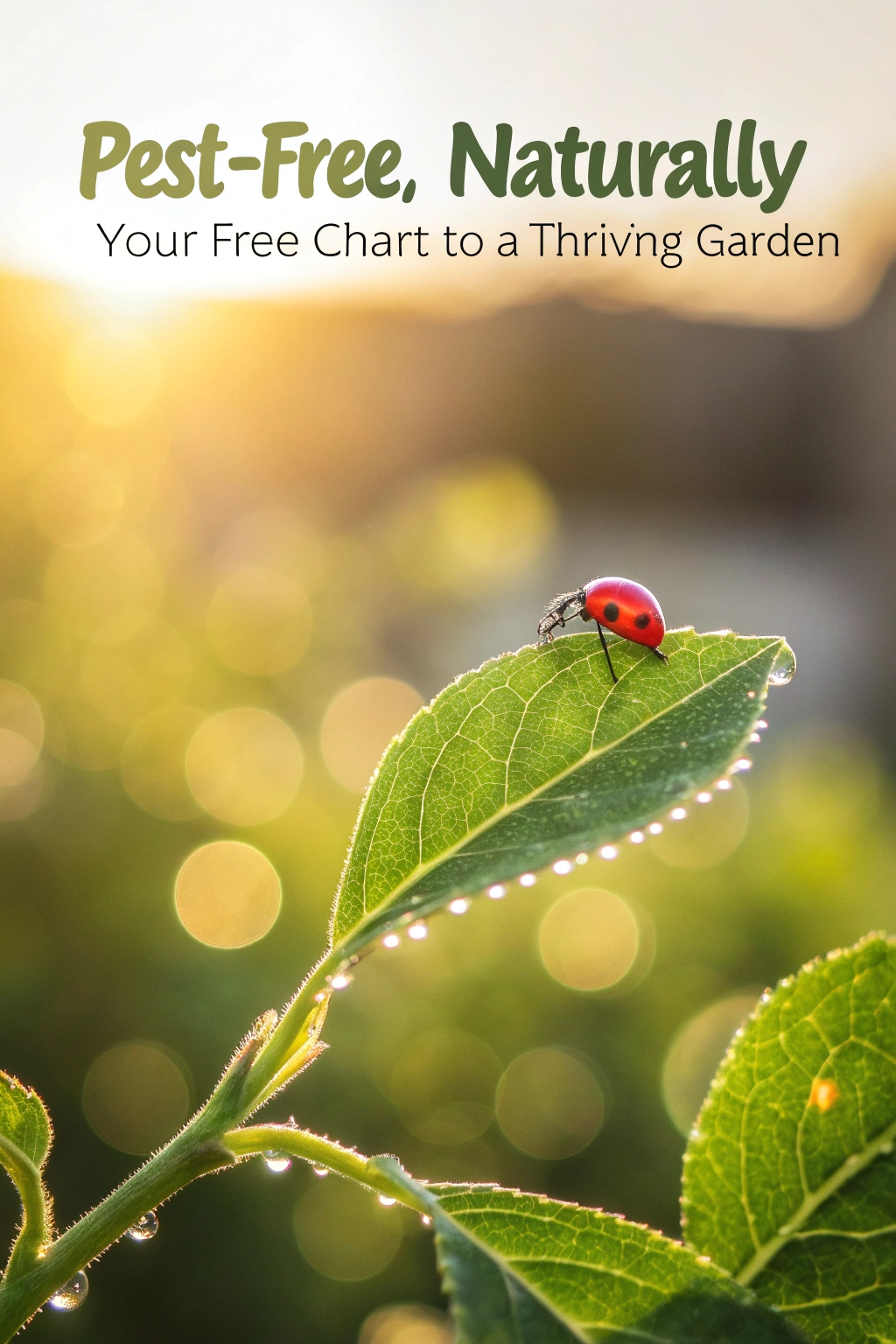Growing herbs at home is fun and easy if you pick the right plants. Think about where you live and how much sunlight your space gets. Some herbs need lots of sun, while others prefer shade.
Water them just enough to keep the soil moist, not too wet. Choose herbs like basil, mint, or parsley that match your climate. Healthy soil is key for strong growth.
Ready to grow? Start with simple herbs that need little care. Place them near a sunny window or outside in a garden.
Watch them grow and use them in your meals. Herbs add flavor and freshness to food. With a little love, your garden will thrive. Grow your own herbs and enjoy nature’s gifts.
Choose the Right Herbs for Your Space
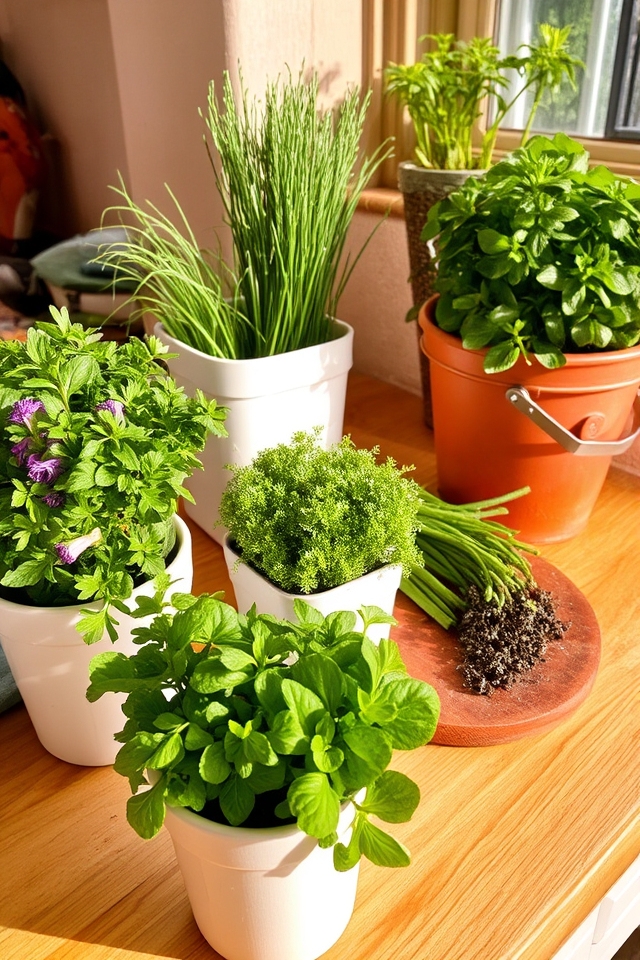
When choosing herbs to grow at home, consider your available space, climate, and culinary preferences. Opt for compact varieties like basil, parsley, and chives for small indoor spaces, while larger areas can accommodate rosemary, thyme, and mint. Make certain the herbs you select thrive in your environment, taking into account sunlight and moisture levels. Tailoring your herb selection to your lifestyle will enhance your gardening experience and provide fresh flavors for your meals.
Consider Your Climate Zone
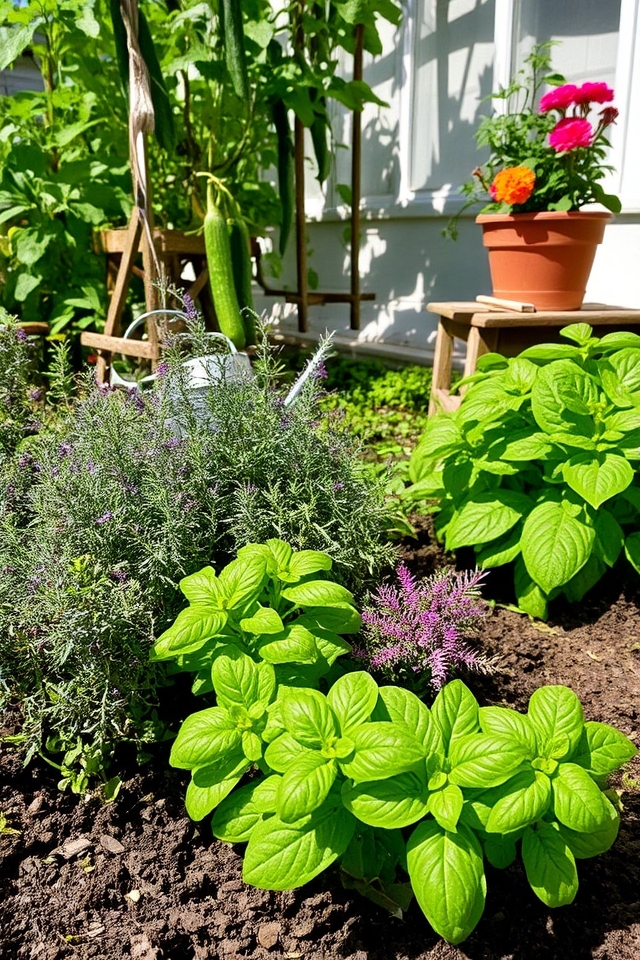
When growing herbs at home, it’s important to take into account your climate zone, as this will greatly influence the types of herbs that flourish in your garden. Different herbs have varying temperature and humidity requirements, so knowing your zone can help you select the most suitable varieties. Research regional growing conditions and choose herbs that thrive in your specific climate, ensuring a bountiful and vibrant herb garden year-round.
Use Quality Soil for Optimal Growth
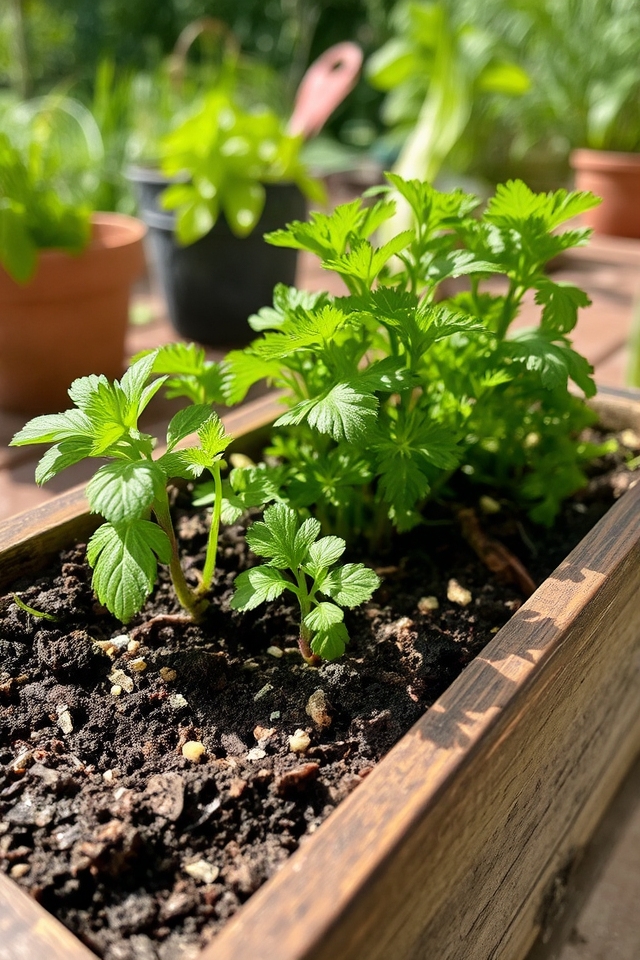
Using quality soil is essential for the ideal growth of herbs at home. Good soil provides essential nutrients, retains moisture, and promotes healthy root development. Look for a well-draining potting mix that is rich in organic matter. Consider blending in compost to enhance soil fertility. This foundation will support your herbs’ growth, allowing them to thrive and produce flavorful leaves for culinary use. Investing in quality soil pays off with vibrant, robust plants.
Select Appropriate Containers
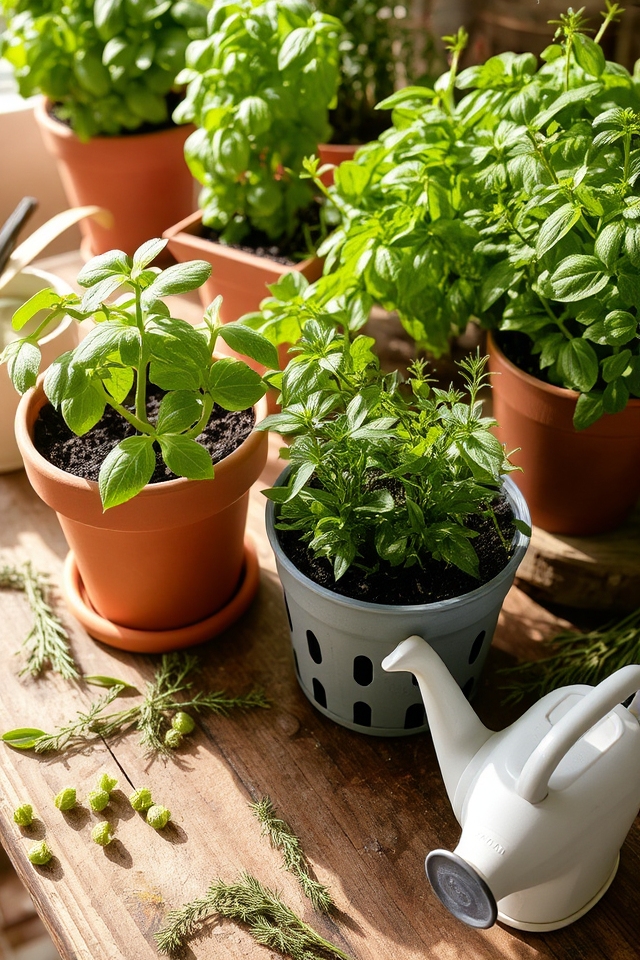
When growing herbs at home, selecting appropriate containers is essential for their health and growth. Choose pots with drainage holes to prevent waterlogging, which can lead to root rot. Consider the size of the container based on the herb’s growth potential; larger herbs like basil may need deeper pots. Additionally, opt for lightweight materials like plastic or terracotta, ensuring they can retain moisture without becoming too heavy to move.
Ensure Proper Drainage
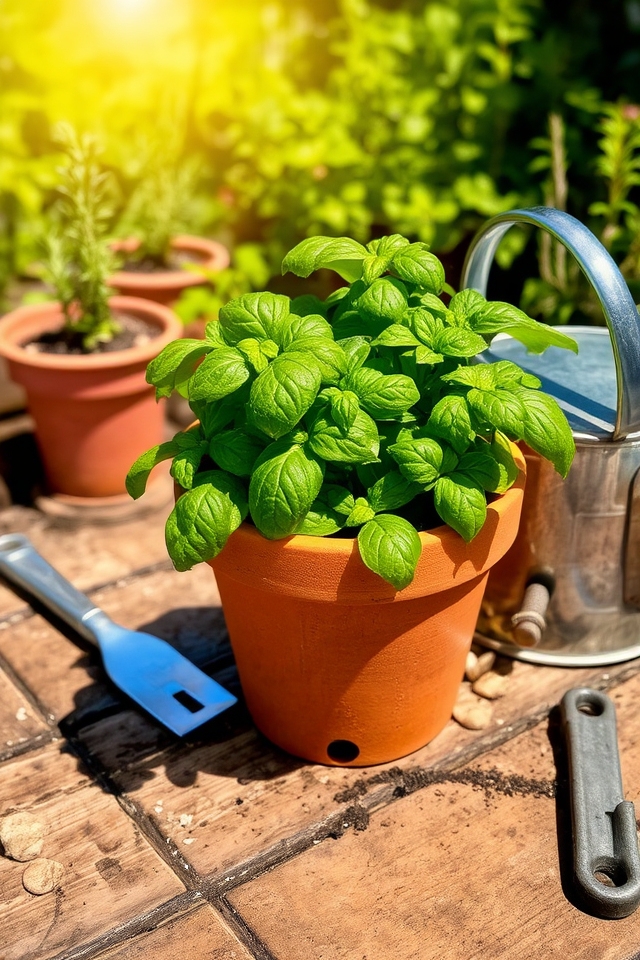
Ensuring proper drainage is essential for growing herbs at home, as it prevents waterlogging and promotes healthy root development. Use pots with drainage holes and consider adding a layer of gravel or pebbles at the bottom. Choose well-draining potting soil designed for herbs, and avoid overwatering. This will help create an ideal environment for your herbs, allowing them to flourish and thrive in your indoor or outdoor garden.
Water Wisely: Less Is More
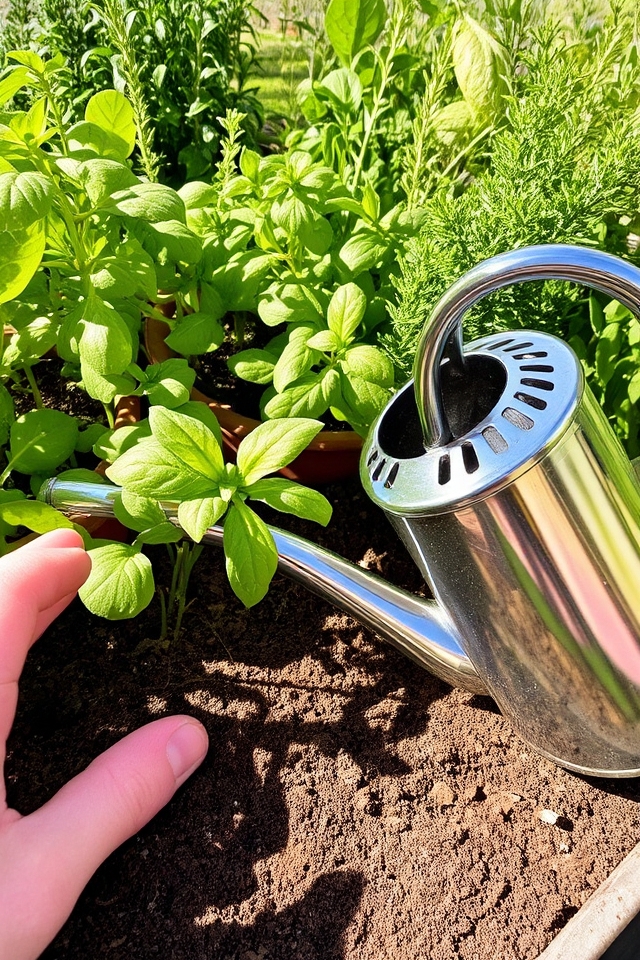
Watering herbs wisely is essential for their health and growth. Most herbs thrive in well-drained soil and prefer slightly dry conditions over being waterlogged. It’s better to underwater than overwater; check the soil moisture by touching it about an inch deep. If it feels dry, it’s time to water. This encourages the roots to grow deeper in search of water, resulting in stronger, more resilient plants. Remember, less is often more when it comes to watering your herbs!
Provide Adequate Sunlight
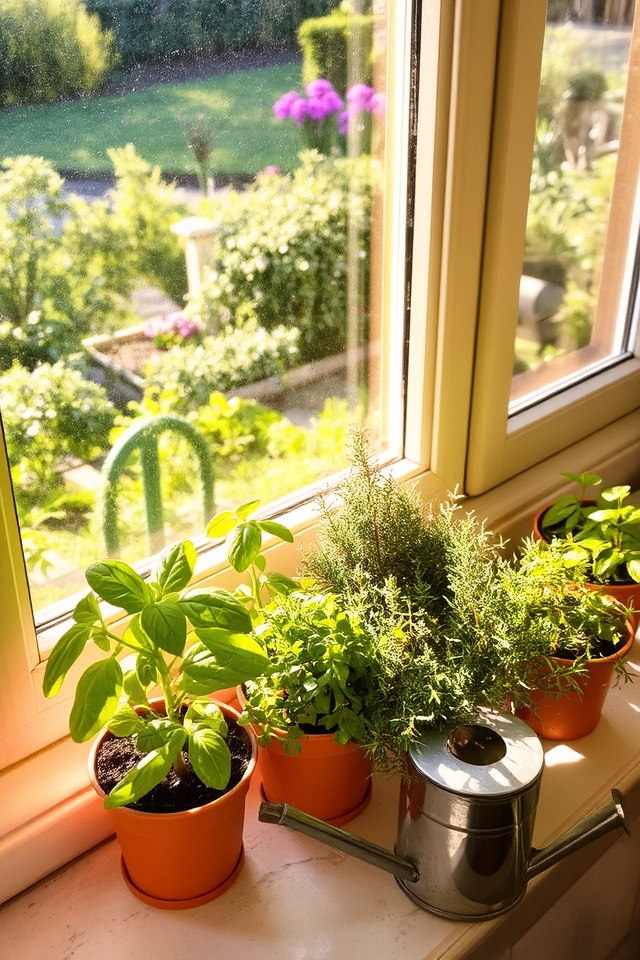
Providing adequate sunlight is essential for the successful growth of herbs at home. Most herbs, such as basil, rosemary, and thyme, thrive in full sunlight, requiring at least 6-8 hours of direct light daily. If growing indoors, place your herbs near south-facing windows or use grow lights to supplement natural light. Outdoor gardens should be positioned in spots that receive ample sun without obstruction. This guarantees ideal growth, flavor, and aroma for your homegrown herbs.
Fertilize Sparingly
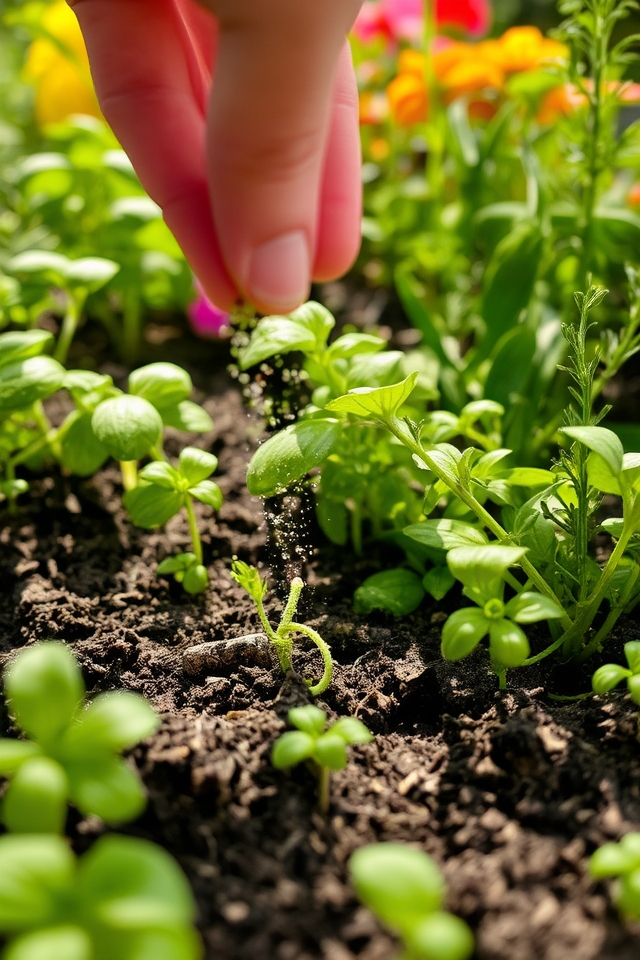
Fertilizing herbs sparingly is essential for their healthy growth and flavor enhancement. Over-fertilization can lead to lush foliage but diminishes the potency of the herbs’ essential oils, impacting their taste. A light application of a balanced, organic fertilizer every four to six weeks during the growing season usually suffices. Always monitor your plants for signs of nutrient deficiency, and remember that quality often trumps quantity when it comes to herb cultivation.
Harvest Regularly
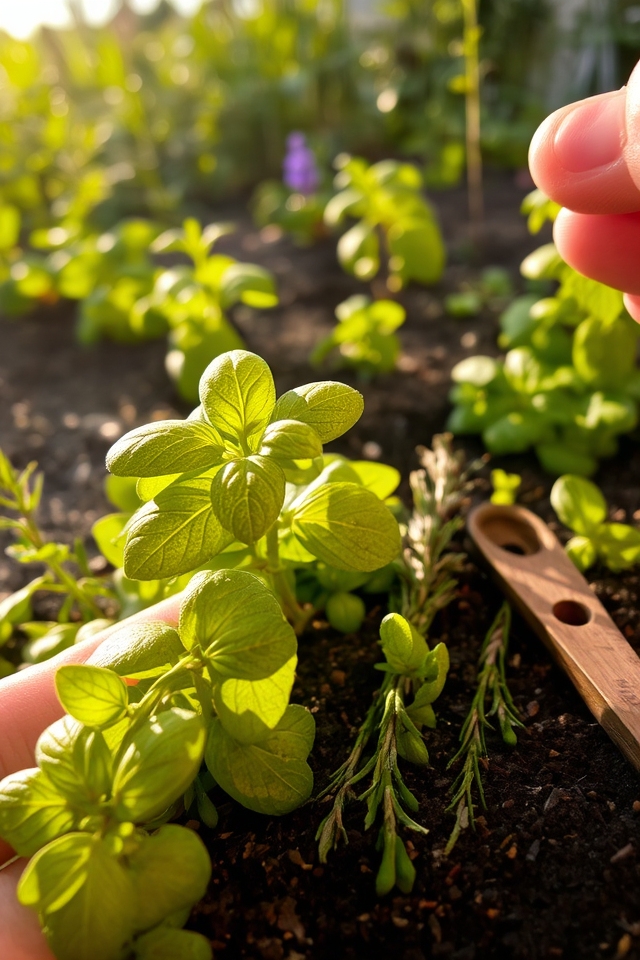
Harvesting your herbs regularly is essential for a thriving home garden. By trimming back leaves and stems, you encourage new growth, ensuring a constant supply of fresh herbs. It’s best to harvest in the morning after the dew has dried, as this preserves the essential oils and flavor. Aim to take only a third of the plant at a time to maintain its health. Enjoy the benefits of freshness in your culinary creations while promoting robust growth!
Prune to Encourage Growth
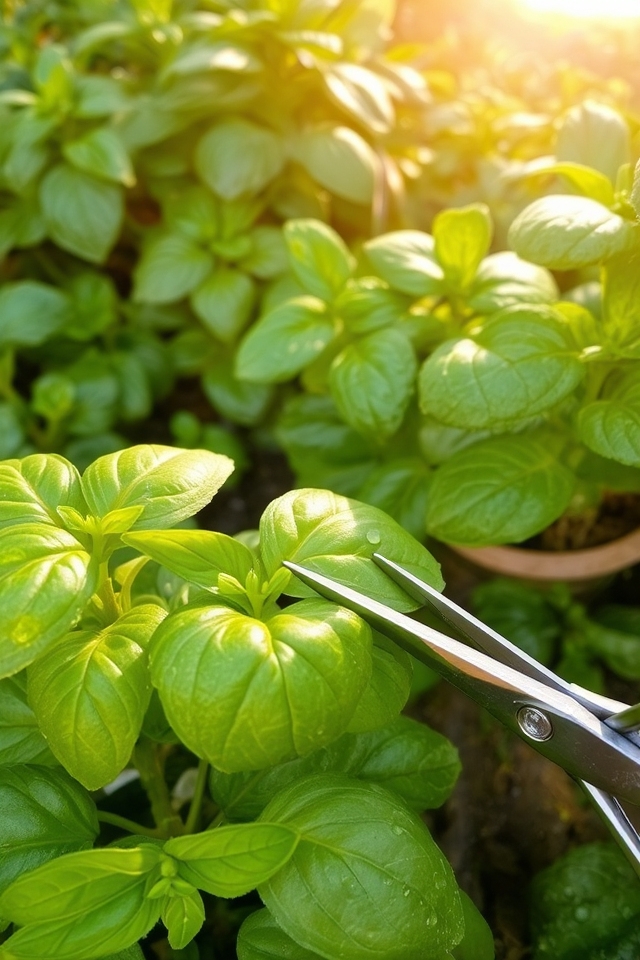
Pruning is an essential practice for encouraging healthy growth in home-grown herbs. By removing dead or unhealthy leaves and trimming back vigorous stems, you promote better air circulation and light exposure, leading to bushier plants. Regular pruning also helps prevent overcrowding and disease spread. Aim to prune herbs like basil and mint regularly, cutting just above a leaf node to stimulate new growth and maintain a vibrant, productive herb garden.
Be Mindful of Pests
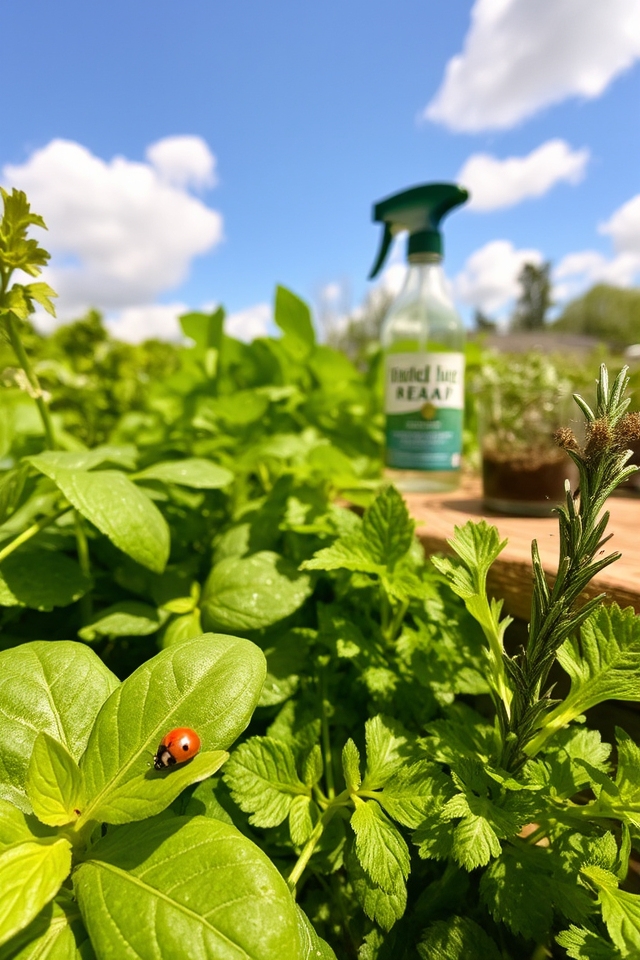
When growing herbs at home, it’s crucial to be mindful of pests that can harm your plants. Regularly inspect your herbs for signs of infestations, such as holes in leaves or sticky residue. Common pests include aphids, spider mites, and whiteflies. Maintaining good air circulation, using insecticidal soap, and introducing beneficial insects like ladybugs can help manage these pests naturally. Staying vigilant guarantees your herbs remain healthy and thriving.
Rotate Herbs for Better Health

Rotating herbs in your home garden not only promotes healthier plants but also enhances your crop yield. This practice involves changing the location of specific herbs each growing season, which helps prevent soil nutrient depletion and reduces the risk of pest infestations. By alternating the placement of herbs like basil, cilantro, and thyme, you create a balanced ecosystem in your garden that encourages biodiversity and overall plant health, leading to more robust and flavorful harvests.
Create a Microclimate
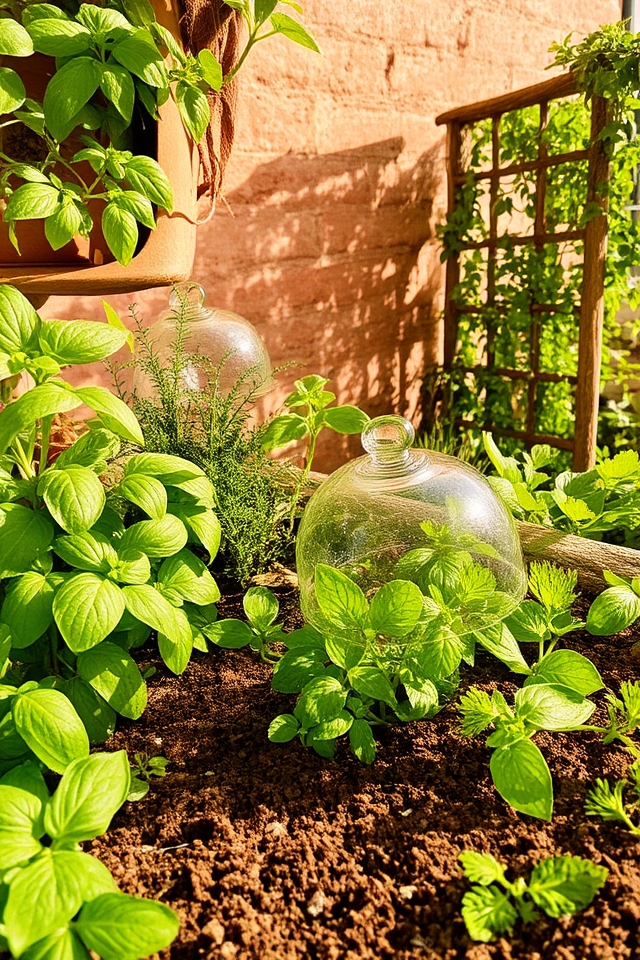
Creating a microclimate is essential for successfully growing herbs at home, especially if you live in a less-than-ideal climate. You can establish a favorable environment by grouping herbs together to retain moisture and create shade. Consider using walls or fences to buffer against harsh winds and reflect sunlight. Additionally, cover your herb garden with row covers or cloches during cooler temperatures to maintain warmth. By carefully managing these elements, you can greatly enhance the growth and health of your herbs.
Use Companion Planting
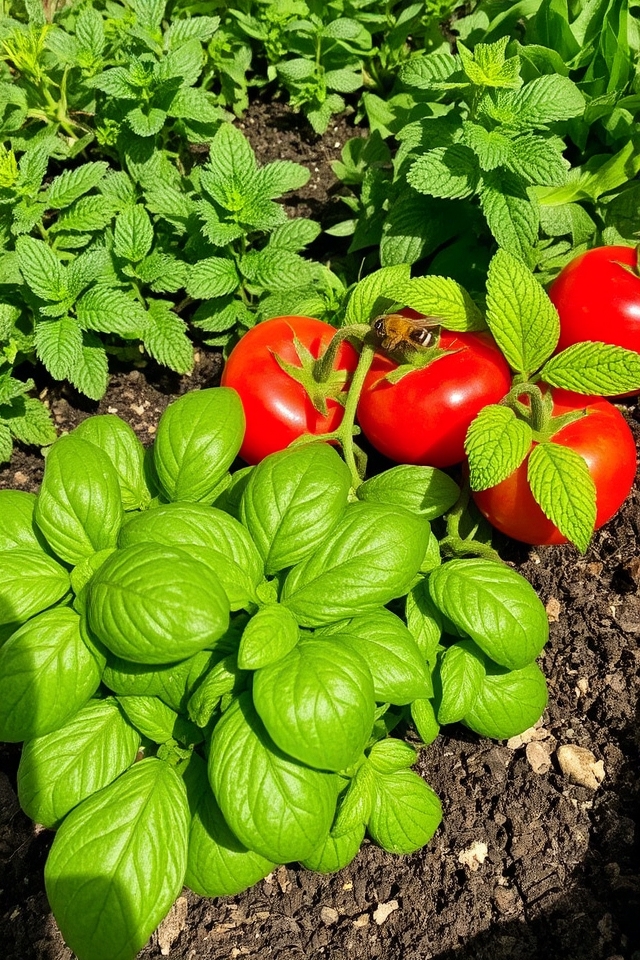
Companion planting is a gardening technique that involves placing different plants close together for mutual benefit. When growing herbs at home, pairing them with compatible plants can enhance growth, repel pests, and improve flavor. For instance, basil thrives alongside tomatoes, as it boosts their growth and deters harmful insects. Similarly, planting mint can help ward off pests from other nearby plants. By strategically arranging your herbs with companions, you can create a more productive and harmonious garden ecosystem.
Experiment With Indoor Herbs
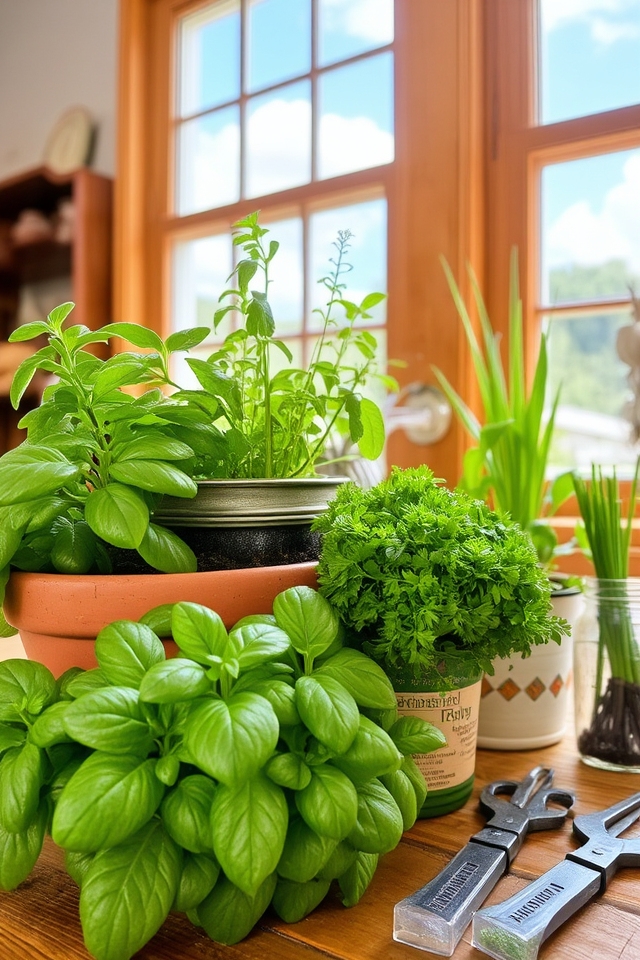
Experimenting with indoor herbs can be a rewarding and enjoyable experience. Start by selecting a variety of herbs that thrive in pots, such as basil, parsley, or mint. Use a well-draining potting mix and place them in a sunny spot, ideally near a window. Don’t hesitate to mix different herbs together or try unique containers. Regularly monitor their growth, adjusting watering and lighting as needed, to discover which combinations flourish best in your indoor garden.
Store Fresh Herbs Properly
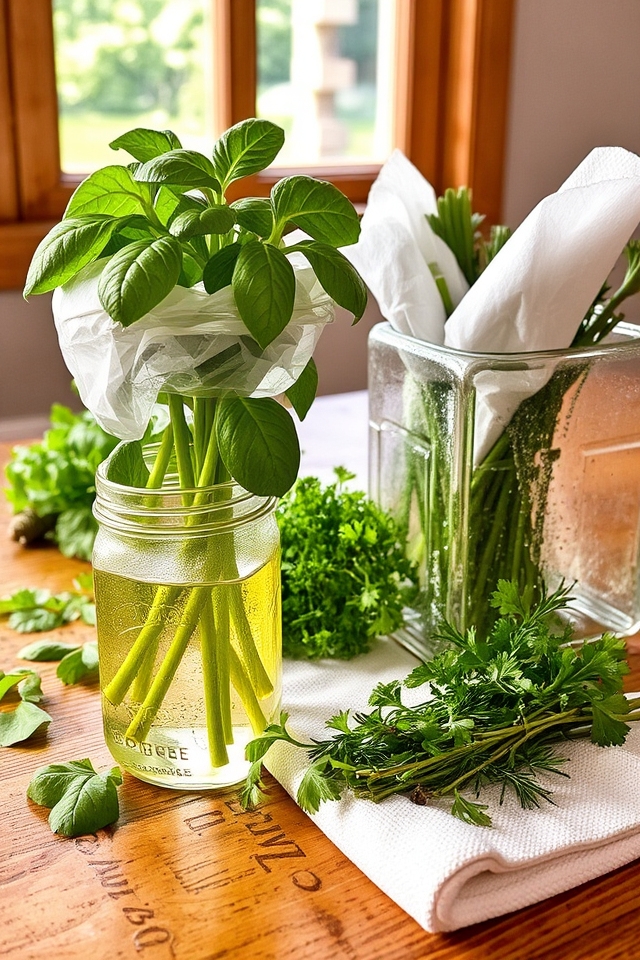
Storing fresh herbs properly is essential to maintain their flavor and freshness. For soft herbs like basil, cilantro, and parsley, trim the stems and place them upright in a jar with water, covering loosely with a plastic bag. Store in the fridge, but basil prefers room temperature. For hardy herbs like rosemary and thyme, wrap them in a damp paper towel and place in a sealed container in the fridge. These methods help prolong their shelf life and quality.
Enjoy the Process of Growing
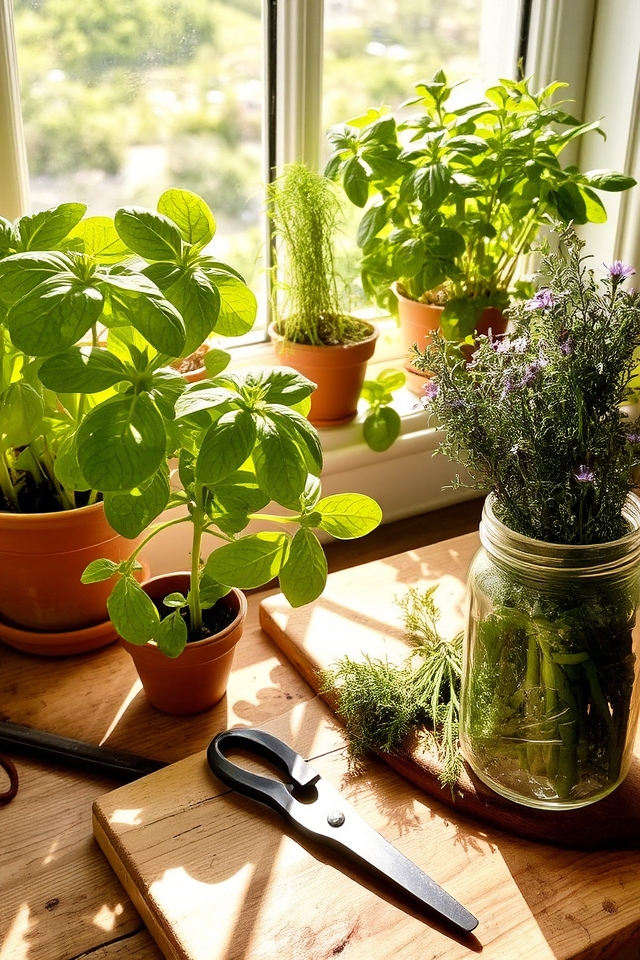
Growing herbs at home is not just about the end result; it’s an enjoyable journey that brings you closer to nature. Engaging in the planting, nurturing, and harvesting processes allows you to connect with your surroundings while learning about each herb’s unique growth patterns. The joy of watching your herbs flourish, coupled with the satisfaction of using fresh ingredients in your meals, makes cultivating your own garden a rewarding experience for all senses.
Conclusion
So, while you might think growing herbs at home is just a matter of tossing seeds into soil, you now know it’s a scientific endeavor filled with careful selection, attention to detail, and a sprinkle of finesse. Ironically, the more you treat these little plants like the divas they are, the more they’ll reward you with vibrant flavors and aromas. So, embrace the art of herb gardening and watch as your kitchen transforms into a botanical paradise—one pot at a time.



